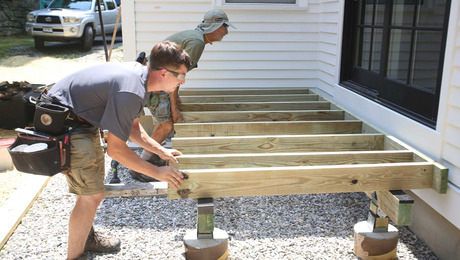Why Pretty Good is Pretty Great
What is a Pretty Good House and where can you learn more about it?

Taunton’s Pretty Good House book should be on every builder’s and homeowner’s bookshelf. It’s a top seller this year, and for good reason. The message of the book is clear: You can build better without breaking your budget. Don’t let perfect be the enemy of good.
“Pretty good” may sound like an undersell, but it’s a great phrase for starting a conversation with someone not steeped in the world of building science. Pretty good is certainly a worthy goal for anyone building a new house. Many goals of building a new home are universal: occupant comfort, enough space for family and things, and durability without tons of maintenance. Other goals are hyper-specific based on occupants or geographic location—a view of the water, a connection to the neighbors, wood floors, no stairs. Fortunately, those are all part of the pretty good equation.
At its core, the Pretty Good House movement is a framework for considering all the pieces of a new home, in a prioritized sequence, in a way that yields energy efficiency and performance alongside creature comforts and desires. And when you plan for energy efficiency at the outset, it’s inherently built into the design, and it’s easier and more affordable to build a high-performance, long-lasting home.
In January, we’re launching a new learning course called the Sustainable Building Accelerator aimed at folks who want to explore the Pretty Good House concept, taught by architect Emily Mottram, one of the authors of the book. If you ever wanted to know more about building science and get to know sustainable building practices quickly, don’t miss it. Whether you’re an architect, a builder, a tradesperson, or even a homeowner who wants to know what to ask for, this course is a great jumping off point into the world of more sustainable building. It’s also eligible for AIA continuing education credits.
Watch the Sustainable Building Accelerator informational video
Energy efficiency and affordability are at the top of my mind when I look at my own house, at projects to cover in the magazine, and even at world events. Housing that requires less energy to condition means less reliance on the supply chain and other countries to get the energy we need. Housing that requires less energy also has lower monthly bills and costs of ownership. It’s a relatively straightforward approach when building new.
But we aren’t going to build enough new housing in the years ahead to even make a dent in demand, let alone tackle greater climate and housing concerns. Remodeling and retrofitting with the same Pretty Good House goals in mind may be the key. Not every new build or remodel needs to be an award-winning Passive House, but the more we think critically and carefully about how we build, and how to get better with each new project, the better off we’ll be. If we continue to shoot for pretty good, the cumulative effect will be pretty great.
—Andrew Zoellner, editorial director
RELATED STORIES
- Is a “Pretty Good House” Good Enough?
- Dos and Don’ts of a Pretty Good House
- BS*+ Beer Show: Pretty Good House
Fine Homebuilding Recommended Products
Fine Homebuilding receives a commission for items purchased through links on this site, including Amazon Associates and other affiliate advertising programs.

Musings of an Energy Nerd: Toward an Energy-Efficient Home

All New Bathroom Ideas that Work

A Field Guide to American Houses

























